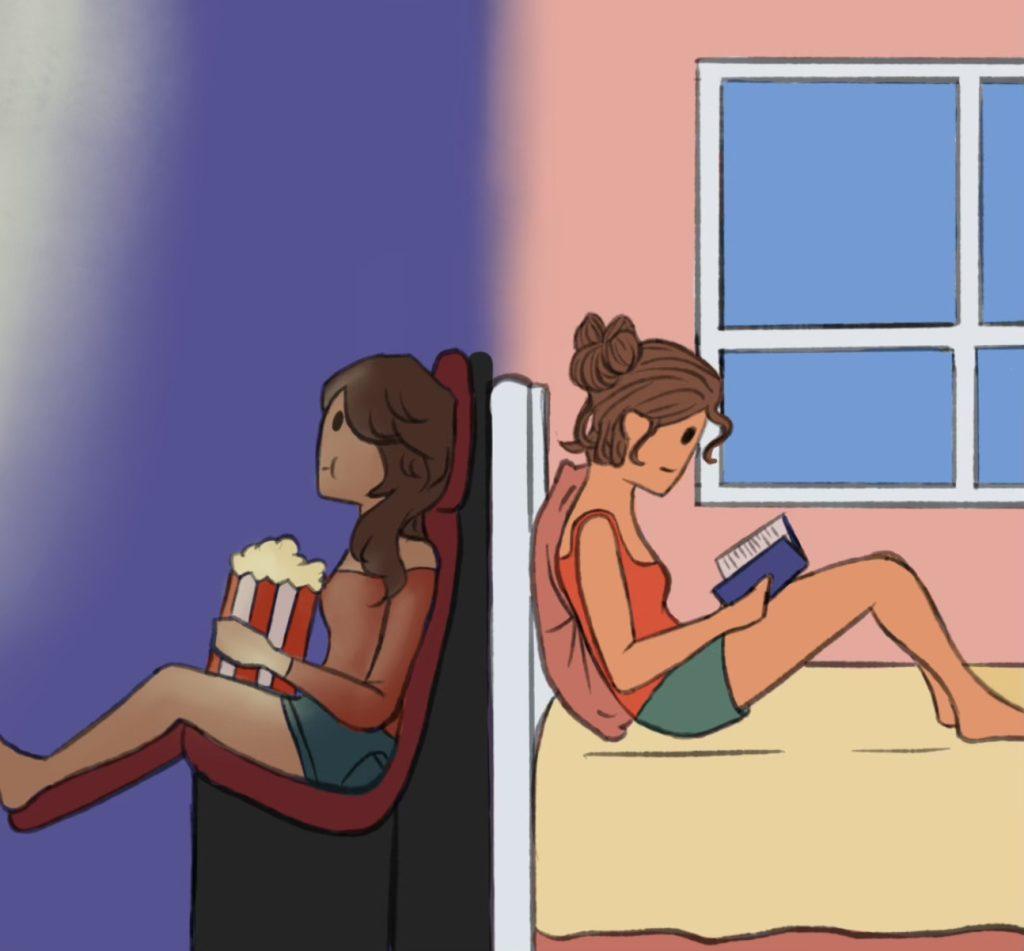
Transparency Item: The Perspectives section of the Graphic is comprised of articles based on opinion. This is the opinion and perspective of the writer.
I fear I am about to present a hot take, but hear me out, because by the end you shall see the method to my madness.
If I am not in school, at work or in the newsroom I am likely reading a book or watching a movie. Or doing either of those activities also while in said school, work or newsroom.
I consume stories in some capacity at any opportunity. When I fall in love with the story on a page, I quickly search for the on-screen equivalent. Books set a perfect foundation for a meaningful, informed screenplay, but, if one plans on turning a beloved novel into a successful film, there is most definitely a right and a very wrong way to do it.
I have seen adaptations done with pure excellence, while others are an utter disgrace to the film medium. But regardless of whether the adaptation is a masterpiece or a mess, they (usually) share one thing in common: The book is better.
Books have the time and space to dive into exposition. Character profiles are authentic and detailed, entire universes are meticulously designed and plot lines have room to unfold naturally.
When we read the book, without the film’s visual guide, we let our imaginations run free and our minds craft the film long before Paramount Pictures or Universal Studios buys the rights. Therefore, if you envision everything in a novel a specific way and the actual film does not create it as such, you are bound to be let down on some level.
The film may be incredible, it may change your life, or it may even possibly be better (sometimes)? But it is never going to be able to capture a story in its entirety.
This is why, if possible, always watch the movie first.
When someone says, “I want to see that movie but I have to finish the book first,” they are setting themselves up for failure.
A movie is one and a half to two hours long, a book is hundreds of pages; things are going to get cut. It’s the way the world works. Chapters will be changed and smushed to make room for the scenes that “translate better on screen.” So while I understand the outrage when your favorite character is nowhere to be seen or the big fight was chopped in half, we kinda knew better all along.
But, if you save the book for after you have seen the movie, you have a jumping-off point. You have an understanding of where things are headed and you get to explore the layers. You might notice things that you maybe wouldn’t have paid attention to if you were experiencing the story for the first time.
Basically, when you read the book first you are deeply saddened by the scenes that didn’t make the final cut, but if you watch the movie first, then when you are reading the book it’s like “Sick! Bonus content!” Obviously, this is if and only if filmmakers get to the book before you do.
For example: I think “Where the Crawdads Sing“ is going to become a modern-day classic. It is phenomenal and I read it before the film came out. I could not wait for this to be turned into a film. But, when I saw the film, I was wildly disappointed. They squeezed Kya’s entire adolescence into the first 2 minutes and the crucial moments to her development were cut. The ending somehow felt abrupt and anti-climactic at the same time. I was so bummed. That story meant so much to me and it was nothing like I envisioned it in my head.
But, the new “Hunger Games” adaptation “The Ballad of Songbirds and Snakes“ greatly exceeded my expectations. The film was excellent, then I read the book and every detail I noticed that was changed in the film or scenes in the book that were missing in the film made me feel like I had a behind-the-scenes view. I loved the story that much more because I had already fallen in love with it on screen. I felt like I was given this gift of extra content.
Books are my life, movies are my passion, and I LOVE when they come together, but reading and watching them must be a curated experience to get the most out of the story.
___________________
Follow the Graphic on Twitter: @PeppGraphic
Email Ava Heinert: ava.heinert@pepperdine.edu
